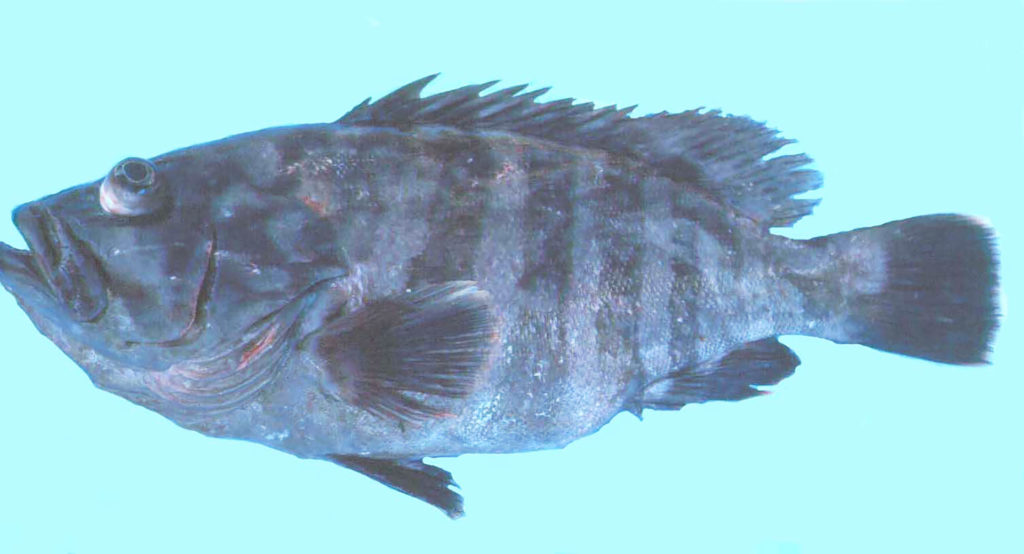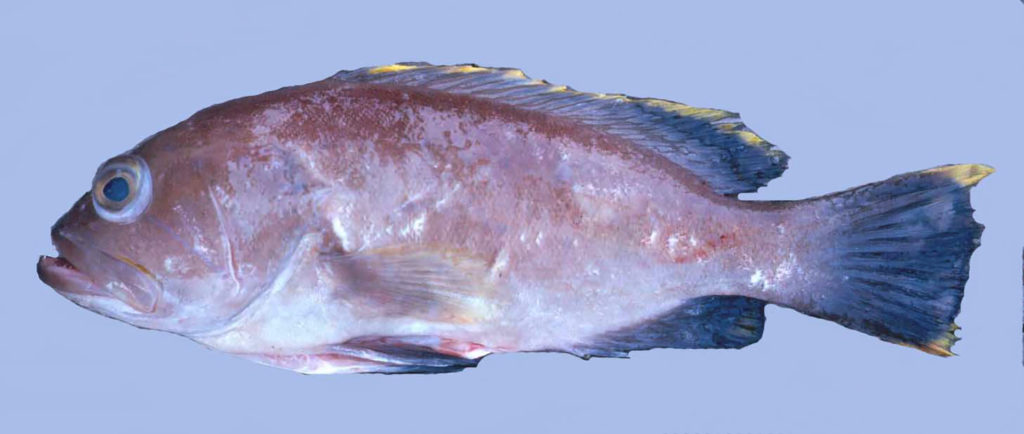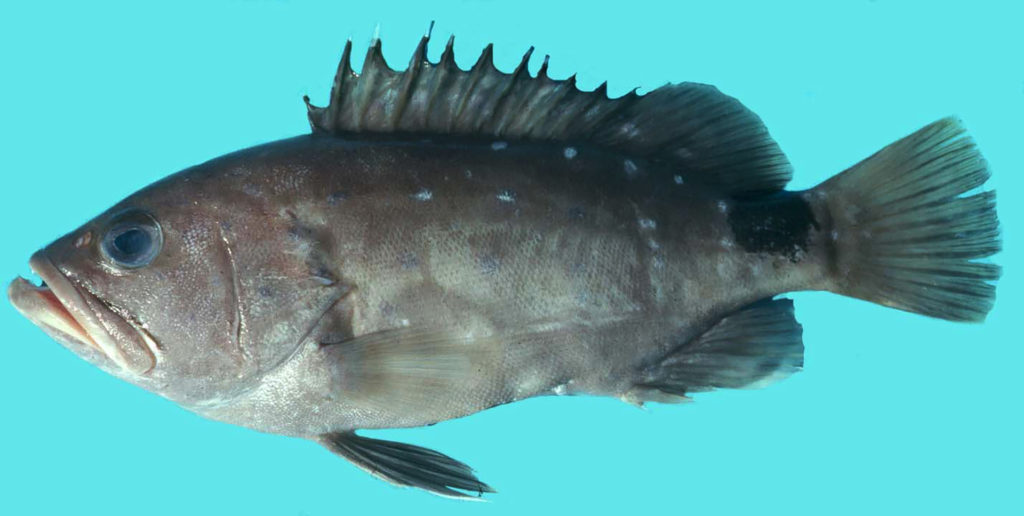
| Family | Scientific Name | Author | Year | Common Name |
| Serranidae | Hyporthodus mystacinus | (Poey) | 1852 | Misty Grouper |
All Hyporthodus — Dorsal fin with 10 or 11 spines and 13-15 rays. Anal fin with 3 spines and 9 rays. Most of upper edge of operculum free, not connected by skin to body. Caudal fin rounded or emarginate. Head larger, its length contained 2.3-3.3 times in standard length. Middle opercle spine not reaching edge of operculum. Front nostrils variously shaped, but always closer to rear nostrils than to upper lip. A thin, moveable supramaxilla bone along upper, rear edge of maxilla (supramaxilla is covered by skin and not obvious, but it can be discerned by pushing the upper edge of the maxilla with a fingernail or dissecting needle; the supramaxilla is more apparent if the skin is cut and peeled off the free, rear part of the maxilla). Most teeth depressible (hinged). Scaly flap of skin joining upper part of inner (posterior) side of pectoral-fin base to body. Soft dorsal and anal fins mostly covered with thick skin and scales. Scales on body small, lateral scale series (69-146) more numerous than lateral-line scales. No large antrorse spine on corner of preopercle (but there may a few enlarged, ventrally-directed serrae there). Snout longer than eye diameter. Body depth usually not greater than head length, 2.5-3.6 times in standard length. Midlateral body scales rough. Pelvic-fin origin in front of vertical at lower end of pectoral-fin base; pelvic fins (of fish 10-50 cm standard length) about equal to or longer than pectoral fins. Head and body not covered with dark red spots.
Hyporthodus mystacinus
Unique Characters: Dorsal-fin spines 11, the third or fourth longest, but scarcely longer than tenth spine. Juveniles (less than 20 cm standard length) with a black bar or saddle blotch on caudal peduncle. Body brownish, with 8 or 9 dark bars (last 2 bars may be fused into a wide band on caudal peduncle).
Similar Species:
Warsaw Grouper Hyporthodus nigritus
Yellowedge Grouper Hyporthodus flavolimbatus
Snowy Grouper Hyporthodus niveatus
Warsaw Grouper Hyporthodus nigritus. Dorsal-fin spines 10, the second spine longest, twice length of tenth spine. Adults dark reddish brown or brownish grey to black; juveniles with yellow caudal fin and scattered white spots on body. No black bar or saddle blotch on caudal peduncle.
Yellowedge Grouper Hyporthodus flavolimbatus. No dark bars on body. Dorsal-fin spines 11, the third or fourth longest, but scarcely longer than tenth spine. Juveniles (less than 20 cm standard length) with a black bar or saddle blotch on caudal peduncle. Interspinous dorsal-fin membranes not deeply incised, their margin yellow or yellowish green in juveniles and small adults. Nostrils subequal. A pearly blue line from eye to corner of preopercle; black saddle on caudal peduncle not reaching below lateral line.
Snowy Grouper Hyporthodus niveatus. No dark bars on body. Dorsal-fin spines 11, the third or fourth longest, but scarcely longer than tenth spine. Juveniles (less than 20 cm standard length) with a black bar or saddle blotch on caudal peduncle. Interspinous dorsal-fin membranes deeply incised, their margin black. No blue line from eye to preopercle. Posterior nostrils 3-5 times larger than anteriors (except in fish less than 15 cm standard length). Black saddle on caudal peduncle of juveniles reaching below lateral line.
Gallery

